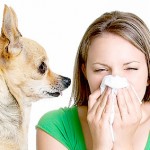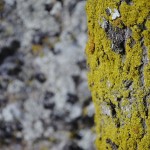Allergic Rhinitis
Allergy is term used in common parlance. This article would concentrate on “Allergic Rhinitis” (runny nose that all of us are familiar with”.
This article would introduce you to the basics and would advise on basic principles of allergy management
The three essentials of diagnosis are listed herewith:
- seasonal or perennial occurrence of nasal pruritus (itching), congestion, rhinorrhea (runny nose), tearing, sneezing, eye erythema(redness), pruritus, irritation etc.
- Environmental aeroallergen exposure
- Presence of specific -IgE antibody to tested aero allergens
Treatment:
There are three basic principles of allergy management are
- Avoidance of allergen
- Symptomatic pharmacologic therapy
- Specific Allergen immunotherapy
Avoidance therapy
Avoidance is the most effective treatment for any allergic condition but may be limited in its applicability.
- Pollens: airborne allergens can travel significant distances, but concentrations are highest near their source.Pollen release occurs early morning and the airborne levels depend of temperature and wind velocity. Closing windows and remaining in air-conditioned environments can decrease exposure when pollen counts are high.
 Animal dander (shedding of skin cells by the animals): If the allergy is light then the patient may benefit my merely keeping the animal out of the room, however it is recommended to move the animal from the house.Washing or treating the fur of a live animal has not been proved to be effective.
Animal dander (shedding of skin cells by the animals): If the allergy is light then the patient may benefit my merely keeping the animal out of the room, however it is recommended to move the animal from the house.Washing or treating the fur of a live animal has not been proved to be effective.- House dust and dust mites: Primary source of exposure in such allergens is the bed. The mattress and the pillows should be encased in dust mite proof material, and all other bedding should be washed weekly dried at a high temperature. the bedroom floor should be uncarpeted and the room should be dusted frequently. Electronic air purifiers have not been proven effective. Acaricides (pesticides for ticks and mites) are not recommended.
- Mold spores: Outdoors in some seasons, avoidance of mold spores is not possible or extremely difficult. Nevertheless activities like farming, gardening etc should be avoided. indoor mold contamination can be controlled by repairing leaks, replacing mold contaminated carpeting and preventing mold build up in bathrooms and around windows.
Drug therapy
Three classes of pharmacotherapy are useful for IgE-mediated diseases based on
- Inhibition of release of mediators from mast cells (Mast cells are “master regulators” of the immune system. They come from bone marrow and go into all tissues of the body. Each mast cell contains secretory granules (storage sacs), each containing powerful biologically active molecules called mediators. These can be secreted when mast cells are triggered, leading to allergic and inflammatory diseases. Mast cells play an important protective role and have been observed as being intimately involved in wound healing and defense against pathogens.)
- Inhibition of the action of mediators on their target cells, and
- Reversal of the vascular and inflammatory responses in the target tissues.
The following table shows the effectiveness of agents used in treatment of allergic disorders.
| Drug Class | Sneezing | Pruritus | Rhinorrhea | Congestion | Inflammation | Onset of action |
| Antihistamines | ++++ | ++++ | +++ | + | – | Rapid |
| Sympathomimetics | – | – | + | ++++ | – | Rapid |
| Corticosteriods | +++ | +++ | +++ | ++++ | ++++ | Slow (days) |
| Cromolyn-nedocromil sodium | ++ | + | + | + | ++ | Slow (weeks) |
| Anticholinergics | – | – | ++++ | – | – | Rapid |
| Immunotherapy | ++++ | ++++ | ++++ | ++++ | ++++ | Slow (months) |
Venom Immunotherapy
Treatment of Atopy- especially allergic rhinitis – by repeated long term injection of allergen has been shown in many controlled clinical trials to be an effective method of reducing or eliminating symptoms and signs of the allergic disorder.
Indications:
This treatment is recommended for patients with severe allergic rhinoconjuctivitis who respond poorly to drug therapy, those seeking to lower their long term medication requirements , and for those whose allergens are not avoidable.
Immunotherapy is unequivocally effective in patients with allergic rhinitis and allergic conjuctivitis who react to pollen, mold and house dust mites.
It reduces immunologic hypersensitivity, symptoms, and medication requirements.
Immunologic effects:
“Allegen immunotherapy” is preferable to “densensitization” because the immunologic basis for this treatment has not been clearly elucidated. Nevertheless, certain immunologic changes can be induced by these injections. Circulating levels of IgE antibodies specific to the injected allergens increase slightly in the first few months, then decrease, eventually to substantially lower levels than before treatment.
Clinical effects:
Most patients with Allergic Rhinitis caused by aeroallergens become more tolerant to natural Pollen exposure during successive seasons while receiving immunotherapy. A small minority becomes completely asymptomatic, but most patients enjoy a significant decrease in symptoms and medication usage.
Only high dose injected immunotherapy has been demonstrated to be effective. A beneficial response may persist for years after treatment is stopped.
Procedure:
A sterile aqueous solution of the allergen or allergens responsible for the patient’s disease is administered by subcutaneous injection in increasing doses once or twice a week until a maintenance dose is reached, at which time the interval is advanced to every 4 weeks. The maintenance dose is typically one to ten thousand times the starting dose. Three to five years is a typical course of therapy.
Adverse Effects
Reactions to the treatment man be local or systemic. Localized immediate and late-phase skin reactions occur at injection sites. These are not harmful, but the dose must be adjusted to avoid excessively large or prolonged local reactions. Immediate systemic reactions or anaphylaxis is a potential problem with each injection and must be prevented by monitoring of dosage.
The patient remains at the treatment facility for at least 20 minutes after each injection so that the drugs and equipment for treating anaphylaxis will be available if needed.
No long term adverse consequences of aqueous allergen extract immunotherapy are known to have occurred in immunocompetent individuals.
